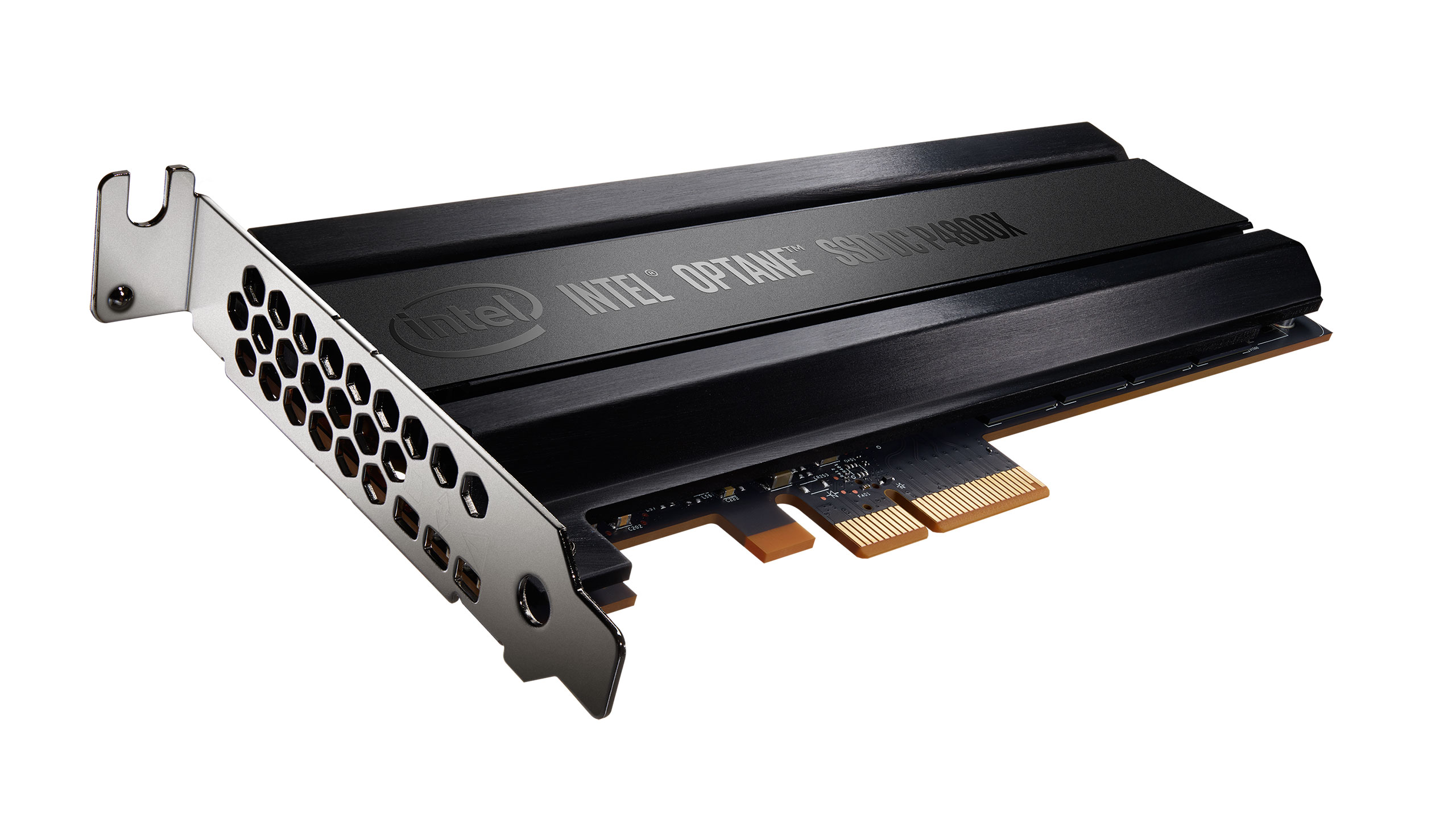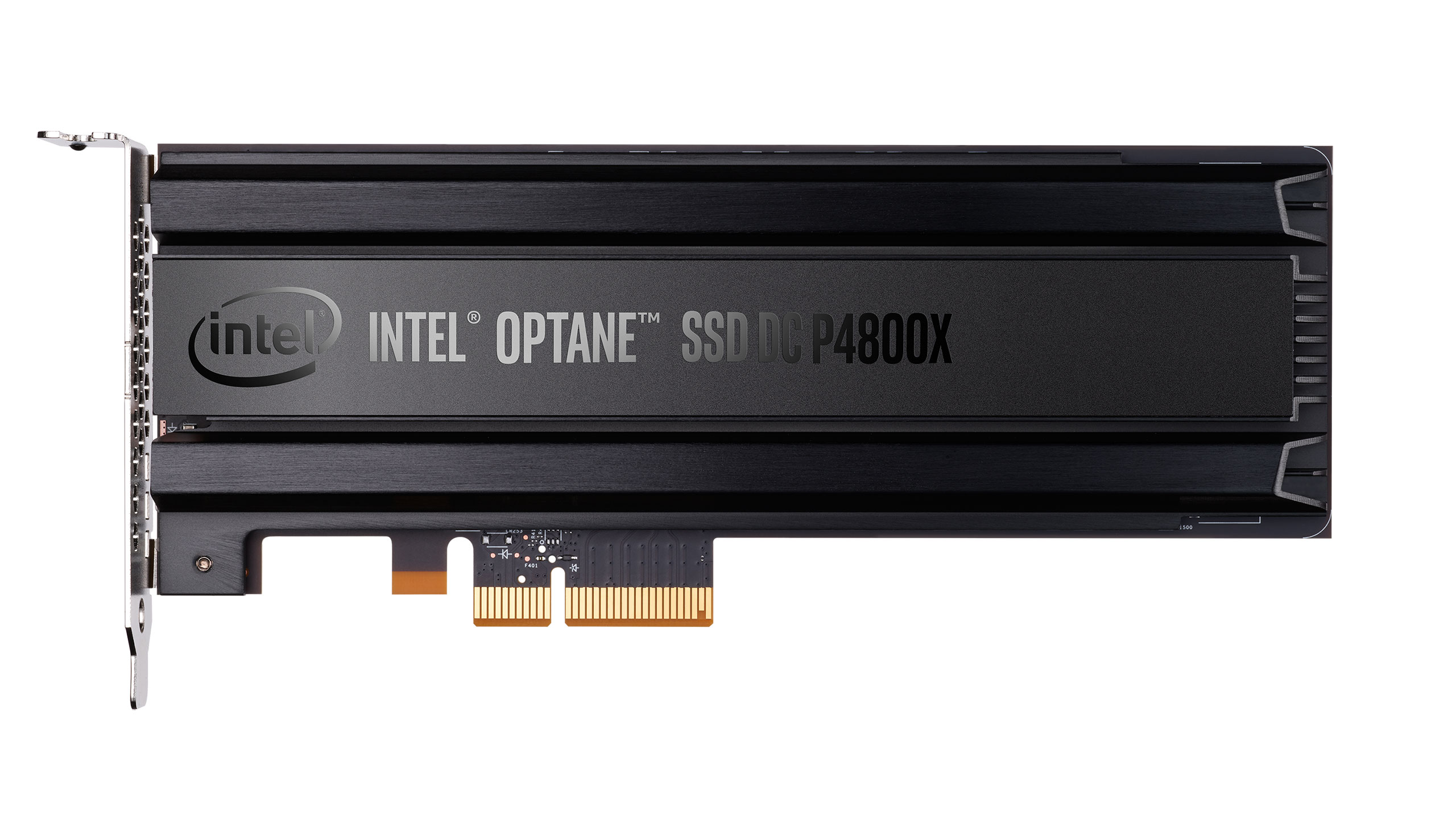Intel Optane DC P4800X reshapes datacenter storage, desktops later
The first SSD with 3D XPoint Technology promises big changes.
Today, Intel is finally taking the wrapper off its first SSD with 3D XPoint Technology. Originally previewed way back in the summer of 2015 at the San Francisco Intel Developer's Forum, the first retail products with 3D XPoint were supposed to arrive last year. 2016 came and went with little news of what was happening, but Intel is now providing the official specs and pricing. The first product is called the Optane SSD DC P4800X—DC being for 'datacenter.' Desktop and consumer versions of Optane will eventually show up, but as with most of its recent SSDs, Intel is targeting the highly demanding—and highly lucrative—enterprise market first, with good reason.
The P4800X specifications aren't likely to turn heads for consumers, which is fine since most of us are well served by far more affordable and higher capacity SSDs right now. The initial models will clock in at 375GB, via a PCIe add-in card or a U.2 drive (similar to the DC P3700 SSDs, or the SSD 750 consumer line), with a healthy retail price of $1,520. Future 750GB and 1.5TB drives will come later in the year. But unlike SSDs where performance often scales with larger capacities, the P4800X should offer basically the same performance at all sizes—that's 3D XPoint at work again.
The internals of the P4800X consist of a controller with seven channels, each populated with four 128Gb 3D XPoint die, giving 28 die total. The extra 73GB or so of capacity is used for things like ECC, firmware, and metadata—there's no need for overprovisioning, unlike NAND SSDs. It also looks like the PCIe-based models will be able to almost entirely saturate the x4 PCIe connections (about 3.7GB/s). And while the specs, capacity and price may not immediately catch your eye, the underlying technology has some serious advantages.
Looking specifically at endurance, Intel rates the drive for 30 total drive writes per day, every day, for the warranty period—three times the endurance of other enterprise drives, many of which have a ton of overprovisioning. That puts the 375GB model at over 20PB of written data for five years, or 12PB for three years. (It's not exactly clear whether the P4800X will have a 3-year or 5-year warranty right now.) By comparison, Intel's DC P3700 400GB drive is rated at only 10 DWPD (drive writes per day). It's phenomenal endurance, but completely out of the realm of what consumers would need. Enterprise workstations and servers on the other hand can definitely use the capabilities.
It's not just about endurance either. Unlike NAND, where all sorts of sophisticated wear leveling algorithms are employed, and read-erase-write operations can affect performance over time, Optane uses a write-in-place methodology for most operations. So a write will never get stuck behind a read/erase, and spare NAND is no longer used in quite the same way. Latency in particular is one of the biggest advantages of Optane, and Intel quotes improvements of over 10X compared to a fast SSD for many workloads.
More importantly, Intel has focused Optane heavily on improving read and write performance at low queue depths, specifically QD 1-4, where most SSD specs are given with random IO performance at QD32. Intel notes that QD32 workloads—even in servers and workstations—are basically completely hypothetical. Virtually no real work actually takes place at QD32, with over 99 percent of operations happening at QD4, or maybe in some cases up to QD 6-8. So the P4800X doesn't just boast impressive specs, but it will actually deliver on those specs in real-world scenarios. Up to ten times the transactions per second in MySQL servers for example.
What does all of this mean for gamers, though? Not a whole lot, particularly for those interested in a balanced PC build. The servers that run multiplayer games are more likely to benefit—Intel mentioned Roberts Space Industries and Star Citizen at one point—and Intel showed some interesting use cases where the performance and low latency of Optane actually allowed servers to run workloads that exceed the RAM constraints to still complete in a reasonable manner. Further down the pipeline, there will be server Optane DIMMs that can boast even higher performance.
Keep up to date with the most important stories and the best deals, as picked by the PC Gamer team.
The 375GB Optane P4800X is officially available today, at least in a limited fashion, with broad availability slated for the second half of the year. Also coming will be higher capacity 750GB and 1.5TB models.
And I want one for testing (for science!), but I'll probably have to wait a while for a consumer offshoot to show up. Sigh. I wonder how fast a pair in RAID0 would be?
Jarred's love of computers dates back to the dark ages when his dad brought home a DOS 2.3 PC and he left his C-64 behind. He eventually built his first custom PC in 1990 with a 286 12MHz, only to discover it was already woefully outdated when Wing Commander was released a few months later. He holds a BS in Computer Science from Brigham Young University and has been working as a tech journalist since 2004, writing for AnandTech, Maximum PC, and PC Gamer. From the first S3 Virge '3D decelerators' to today's GPUs, Jarred keeps up with all the latest graphics trends and is the one to ask about game performance.




